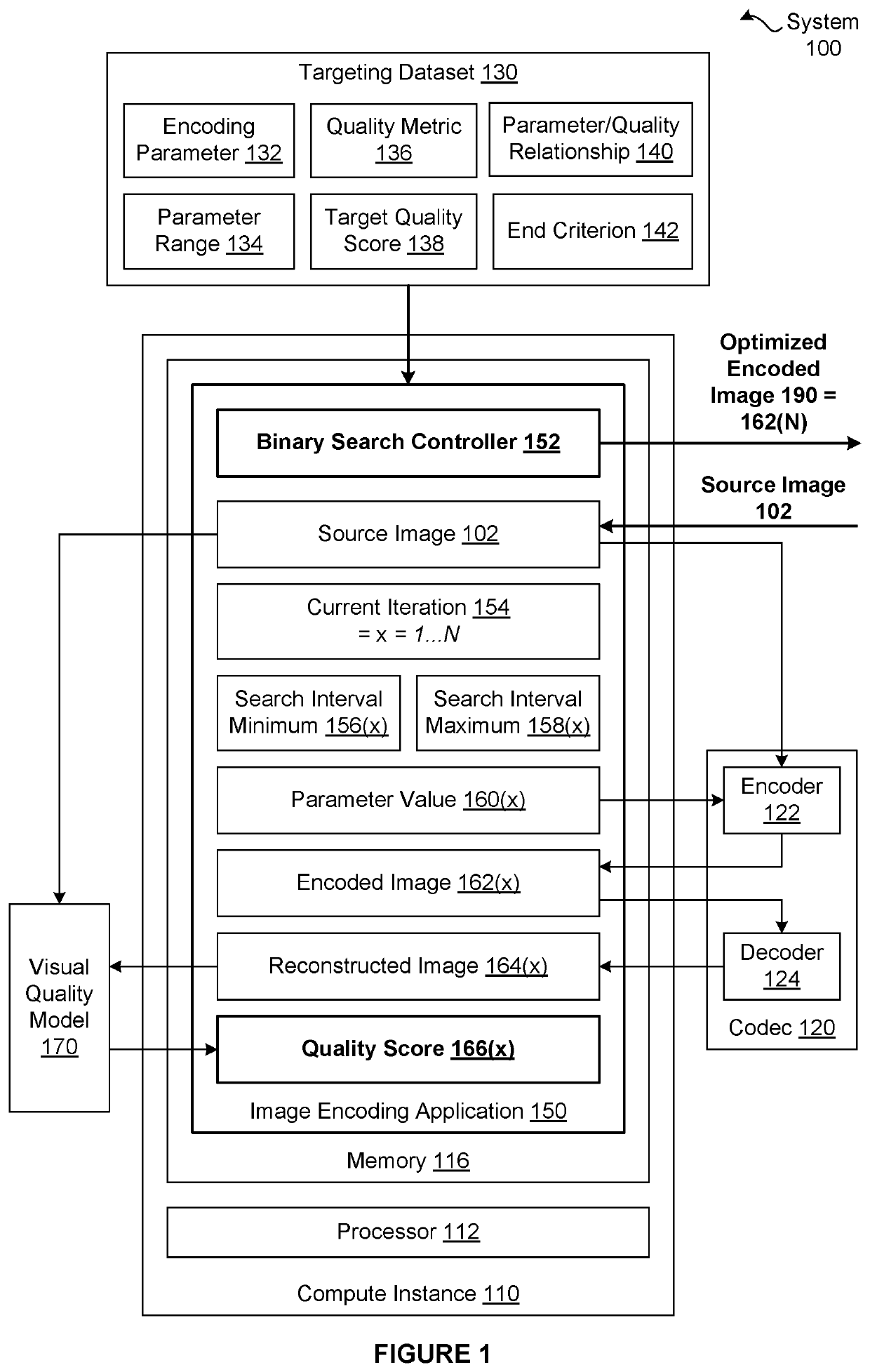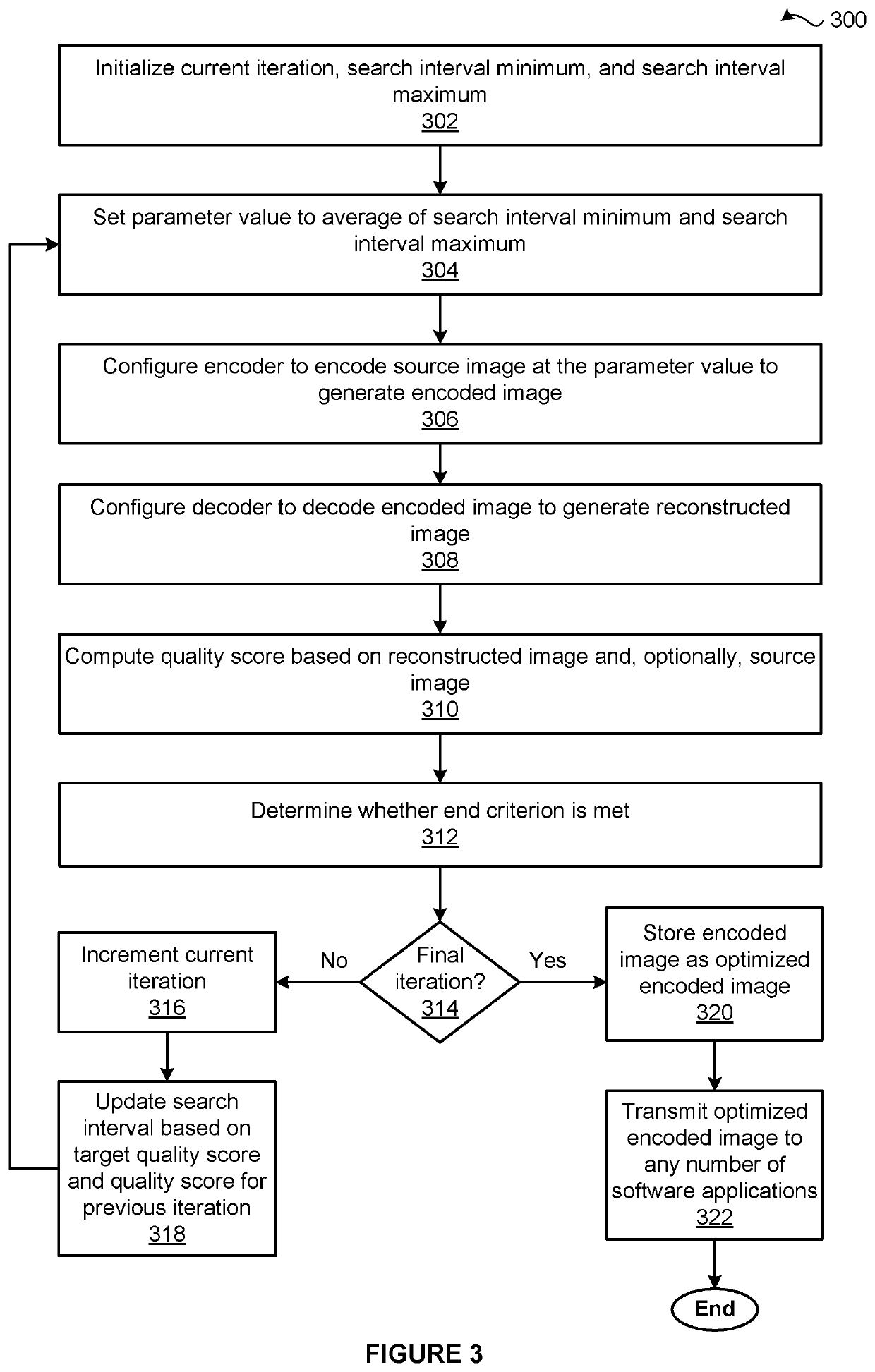Techniques for comparing the compression efficiency of encoding configurations
a compression efficiency and configuration technology, applied in image enhancement, image analysis, instruments, etc., can solve the problems of unnecessarily waste of 4 kb, subpar tradeoff between file size and visual quality level of some source images, and the loss of encoding relatively simple source images, so as to reduce the number of bits unnecessarily wasted, reduce the storage resources required to store the resulting encoded images on the website server, and reduce the number of bits wasted
- Summary
- Abstract
- Description
- Claims
- Application Information
AI Technical Summary
Benefits of technology
Problems solved by technology
Method used
Image
Examples
Embodiment Construction
[0002]The various embodiments relate generally to computer science and image processing and, more specifically, to techniques for comparing the compression efficiency of encoding configurations.
Description of the Related Art
[0003]To reduce the time required to load web pages onto endpoint devices, encoding processes are used to remove selected information from the source images that are ultimately displayed on the web pages. Relative to the source images, the encoded images contain less content and, therefore, can be transmitted from a website server to a web browser application using less bandwidth, which increases download speed. As the web browser application loads the web page that ultimately displays one or more of the source images, the web browser application executes a decoding process on the encoded versions of the source images. The decoding process generates reconstructed versions of the source images. However, because the encoded versions of the source images do not incl...
PUM
 Login to View More
Login to View More Abstract
Description
Claims
Application Information
 Login to View More
Login to View More - R&D
- Intellectual Property
- Life Sciences
- Materials
- Tech Scout
- Unparalleled Data Quality
- Higher Quality Content
- 60% Fewer Hallucinations
Browse by: Latest US Patents, China's latest patents, Technical Efficacy Thesaurus, Application Domain, Technology Topic, Popular Technical Reports.
© 2025 PatSnap. All rights reserved.Legal|Privacy policy|Modern Slavery Act Transparency Statement|Sitemap|About US| Contact US: help@patsnap.com



